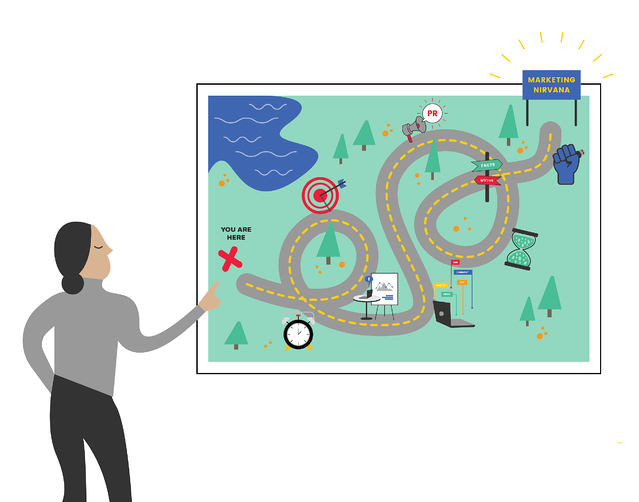Everybody Needs Marketing Sometime
Notes from the road to Marketing Nirvana - Part 1
True story.
The CTO entered the room reluctantly. It was obvious he didn’t want to be there. The forced smile behind his bushy, salt-and-pepper beard, the barely-interested glance he shot my way, and the limp handshake gave it away.
“They tell me I should speak to you,” he stated flatly as he took the seat across from me at the conference table. “I don’t know why. We don’t need marketing. The product is unique and people will buy it without the marketing. So, I really don’t see why we need you.”
To say he caught me off guard would be an understatement. We had already gone through the requisite introductory, discovery, and pitch stages with the rest of the client team. This, we had been told, was merely a formality. Since the CTO had invented the technology, held all the patents, and was also the co-founder, the client team wanted to keep him in the loop about who they had chosen to market the company. No worries, they said. But the look in his eyes told me he thought this was all a waste of time.
“So,” he concluded as he leaned back in his chair. “Tell me why we should hire you.”
“So,” he concluded as he leaned back in his chair. “Tell me why we should hire you.”
I remember pausing a split second to bite back the first thought that screamed through my brain: “What do you mean, you don’t need marketing?!”
I considered stating the obvious: “You need marketing because your sales are slumping, there are competitors nipping at your heels, and your key investors are getting nervous.”
I ditched that thought as too direct and avoided looking at the other faces at the table. Instead, I kept the eye contact the CTO had established with me and noted that the smile behind his beard revealed that he was pleased with the effect he had on everyone in the room.
“Well, your product is not going to market itself,” I stated evenly. “If it could, we wouldn’t be having this conversation.”
“Well, your product is not going to market itself,” I stated evenly. “If it could, we wouldn’t be having this conversation.”
I was bolder back then. I didn’t have a problem speaking my mind. But the flicker in his expression told me he didn’t like my answer. So, I adjusted my approach and shifted to talking about how marketing affects the sales process. It’s a tried and true angle that always hits the right spot: the balance sheet.
Over the course of the next 20 minutes, I kept my tone light and friendly as I explained what every good marketer and astute CEO knows.
I started by admitting that marketing would not sell his product. That was up to the sales team. But, I explained, marketing would create awareness for his product. It would present the value the product provided to his target customers — from the customer’s point of view. And it would emphasize what made his product different from similar offerings on the market.
He still wasn’t convinced.
“Awareness,” he said dismissively. “That’s not tangible. It’s not a real thing. You can’t measure awareness. You can measure sales.”
I still wasn’t put off.
“But you can’t make a sale if your market doesn’t know anything about your product,” I countered.
“The sales guys can do that when they meet the customer,” he parried.
“True,” I feinted. “But wouldn’t it be better if we could get closer to a sale by eliminating the first five minutes of the conversation that focuses on who you are, what you do, what you offer, why it’s great, the value it provides, and why the customer should care? Then, the sales guys could get right to how your product benefits that specific customer and have a more focused conversation that may get you to a sale quicker.”
“And how can you do that?” he asked.
“And how can you do that?” he asked.
I had his attention. Sales is always the key. But he wanted to be convinced. So, I took him through the basics. I talked about how everything starts with messaging and finding the right words to position his product and the value it delivers to his target market. I explained how messaging and positioning form the foundation of a truly integrated marketing program built on content that repeatedly and consistently delivers the key value statements with a variety of marketing tools. I took an example of one of his product’s attributes and outlined how the integrated marketing program could deliver the message on a website, through an ad, in a presentation, on the trade show floor, in a video, and via social media.
He listened attentively and seemed to be coming around. But he had one last thrust to make.
“That all sounds interesting,” he said. “But how do you know if it works?”
I explained the basics of measuring campaigns and tactics. I outlined the measurement benchmarks for specific tactics, such as ads, the web, and social media. I tied it back to marketing-qualified leads and the handoff to sales. And I launched into the tracking of conversion rates and sales. In the end, I think he just wanted me to stop talking.
“Okay,” he cut in. “I guess, then, that everybody needs marketing sometime.” He looked around to the other members of his team. “So, when do we start?"
“Okay,” he cut in. “I guess, then, that everybody needs marketing sometime.” He looked around to the other members of his team. “So, when do we start?"
We started the following week. Over the course of several months, we repositioned the company in its market and delivered the promised increase in awareness with a mix of marketing and public/media/analyst relations. Over the course of the first year, we were able to show how the marketing programs and campaigns were having a direct impact on sales. By the end of the second year, enough interest was generated that buyers started sniffing around.
Shortly thereafter, the company was sold.
The CTO became a millionaire.
And I’m still somewhere on the road to marketing nirvana.
But that’s another story.
Be sure to check out part 2, where you can read about a marketing lecturer that started a course by hurling a textbook across the room.

This blog is based on a true story from my notes on the road to marketing nirvana. The names of the companies and people involved have been eliminated or changed to protect the guilty.
